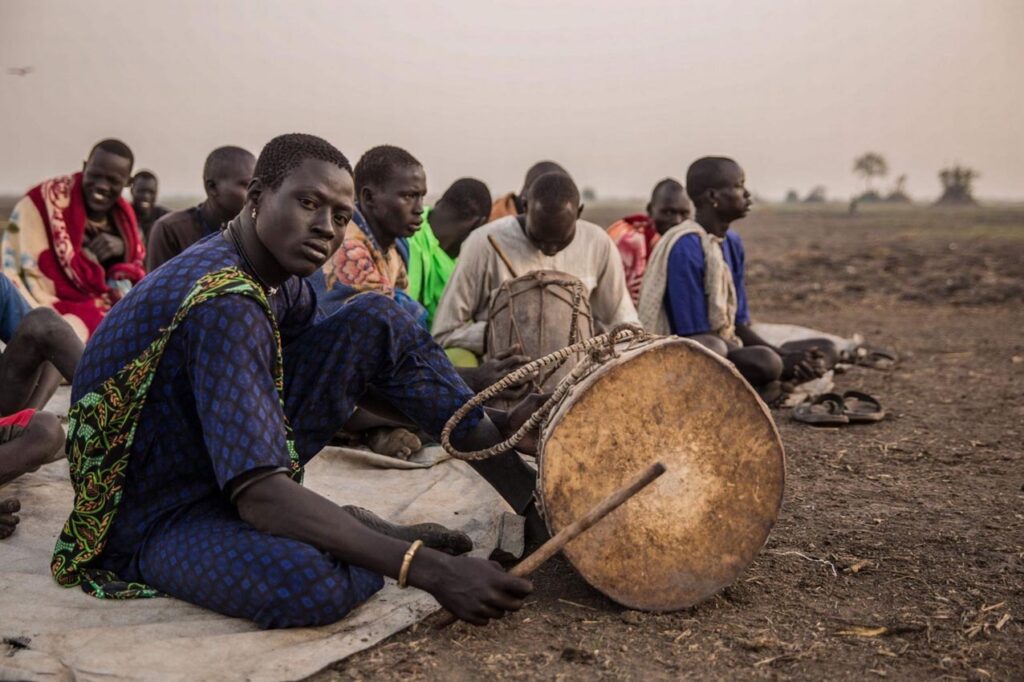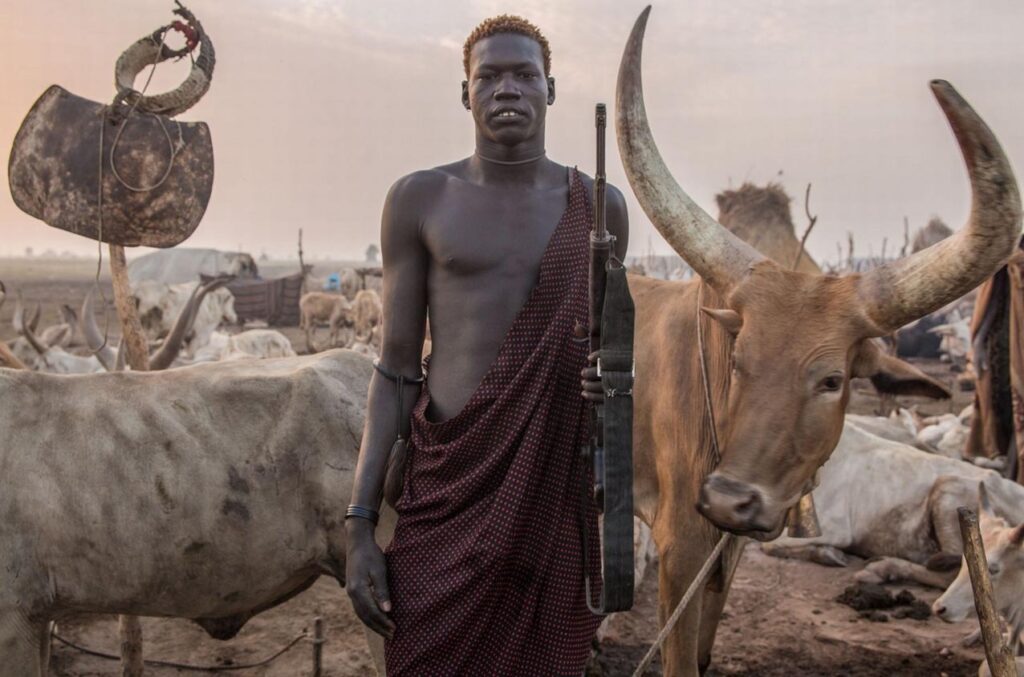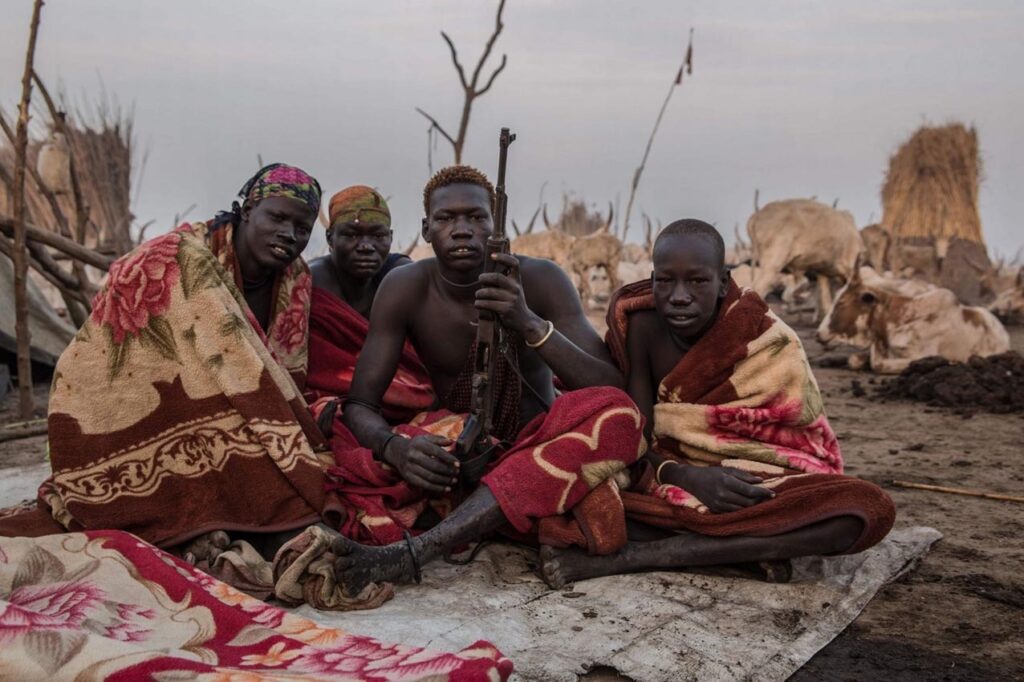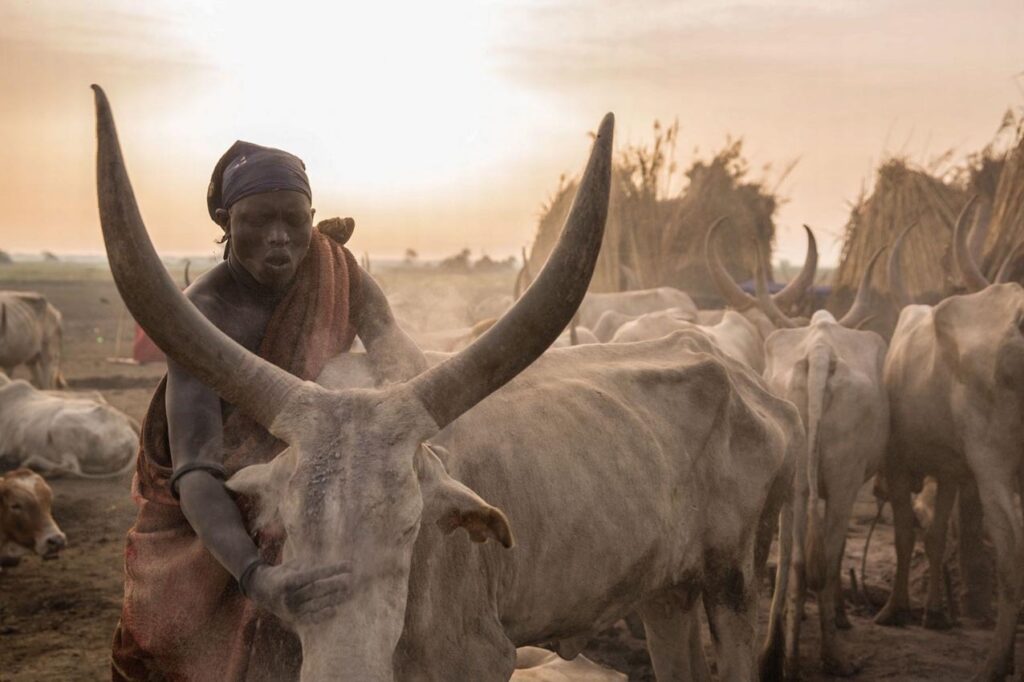Shrinkage: In the past Sudanese pastoralists from the highlands moved to the lowlands during the dry season so that their animals were close to grazing land. But civil war and climate change has resulted in encroachment on cultivated land. Photos: Stefanie Glinski/AFP
For Otto Washington Okwera, a South Sudanese crop farmer, cattle bring only destruction. “The cattle come and destroy all the things in the garden,” he said.
Okwera is the chief in Agoro Payam, a village in Magwi County in South Sudan’s Eastern Equatoria State. His people grow maize and vegetables on small plots. But their livelihood is under threat from an influx of cattle herders, who have been forced out of their traditional grazing areas.
Disputes between crop farmers and pastoralists are not new, nor are they unique to South Sudan. In much of Africa’s central belt, across the breadth of the Sahel Desert — a region encompassing Senegal, Mali, Burkina Faso, Nigeria, Niger, Chad, Sudan, South Sudan and Ethiopia — the constant tension between crop and cattle farmers over the use of land has, for generations, shaped how societies develop.
 A South Sudanese man from the Dinka people stands next to his cows in the early morning at their cattle camp in Mingkaman, Lakes State, South Sudan. During South Sudan’s dry season between December and May, pastoralists from the highlands move to the lowlands and close to the Nile, where they set up big cattle camps to make sure their animals are close to grazing land.
A South Sudanese man from the Dinka people stands next to his cows in the early morning at their cattle camp in Mingkaman, Lakes State, South Sudan. During South Sudan’s dry season between December and May, pastoralists from the highlands move to the lowlands and close to the Nile, where they set up big cattle camps to make sure their animals are close to grazing land.
In South Sudan — where an estimated 80% of the population rely on cattle to some degree, according to the United Nations’ Food and Agriculture Organisation — this ancient conflict has been exacerbated in recent years by civil war, which has displaced nearly two million people, and climate change, which has dried out or flooded areas that were previously fertile grazing lands.
Villages such as Agoro Payam find themselves on the front line. Okwera does not know what to do. He has tried approaching the herders directly, but this can be dangerous. “The owners of the cattle give us a hard life. When the cattle have eaten the crops in the garden, and you go and follow up, they will say that you want to steal their cattle and you will be beaten thoroughly,” he said.
He has also tried approaching local authorities, but they are equally powerless.
Growing insecurity
Joseph Oryem is the administrator of Agoro Payam. This makes him the most senior government official in the village. He has attempted to raise the issues of the crop farmers with the cattle herders. But when he does so, he encounters an even more powerful force: South Sudan’s military.
“Actually, I was not beaten by the cattle keepers but by these soldiers who are brought here to defend the cattle,” he said.
In many regions in the country, soldiers have been sent to accompany cattle herders — supposedly to keep the peace between herders and farmers. But in Agoro Payam, the soldiers have taken sides, according to Oryem.
 Sudanese cattle herders from the Dinka people gather to pray in the early morning at their cattle camp in Mingkaman, Lakes State, South Sudan.
Sudanese cattle herders from the Dinka people gather to pray in the early morning at their cattle camp in Mingkaman, Lakes State, South Sudan.
The presence of the military comes with problems of its own. One afternoon in July, a group of soldiers drank 45 000 Sudanese pounds ($813) of alcohol brewed by a woman in the village. They attempted to pay for the alcohol with ammunition. When she asked for cash instead, they assaulted her.
Oryem witnessed the assault. When he tried to intervene that he was beaten too — so badly that he had to be taken to hospital. The soldiers were also unhappy with him because he had refused to allocate grazing land to the cattle herders.
“This has brought insecurity to my people,” he said.
Other local officials, including an officer at the Agoro Payam police station, have said that the arrival of cattle herders coincided with an increase in crime in the area, especially rapes and abductions.
The state governor, Louis Lobong, echoed these concerns. He warned of further confrontations between the crop farmers and the herders unless something changed quickly.
“People will die, and we don’t want that. We need to talk, we need to understand why they are here, how long they will be here and when they will go back,” he said. “These cattle keepers, they came and there was no information. They have never asked the host communities, ‘Can you allow us to graze?’, nor us, the state government.”
On the run
In the meantime, he said, some crop farmers are fleeing the state for uncertain and possibly dangerous futures in other parts of the country, or even to refugee camps in neighbouring Kenya and Uganda. “Our people are running.”
Patience. That’s what Abraham Makur, the secretary general of the Magwi County cattle-keeper’s association, is calling for. He understands the arrival of tens of thousands of head of cattle in the area has placed new burdens on the local residents.
But what other choice do the cattle keepers have?
“At the moment, there’s no way we can tell the cattle keepers to go back to Jonglei [state in South Sudan], because there’s nowhere people can settle,” he said.
South Sudan’s seven-year civil war ended officially in February, when the government signed a peace deal with the main rebel movement. But that has not ended conflict. In May, for example, more than 300 people were killed when fighting erupted in Jonglei State. Dozens of homes were raided and destroyed, and women and children were abducted.
 A man poses with a rifle in the early morning at their cattle camp in Mingkaman, Lakes State, South Sudan.
A man poses with a rifle in the early morning at their cattle camp in Mingkaman, Lakes State, South Sudan.
The fighting was centred in the town of Pieri, and it was driven by the same tensions that are straining the peace in Magwi County: the competition for land between cattle herders and crop farmers.
Except this time, the tensions boiled over, with devastating consequences.
In the wake of the violence, some herders took their cattle in search of new pastures. They were soon followed by others fleeing the floodwaters that devastated much of Jonglei during this year’s rainy season.
In total, more than 157 000 people from Jonglei were displaced. They too were running, driving their cattle in front of them.
Some went south to Bor, the capital of Jonglei State, or even further south to Juba, the capital of the country.
Others headed southeast, ending up in Eastern Equatoria State where they received a cold welcome.
When the flood waters recede, the herders will take their livestock home, said Makur. In the meantime, the cattle must eat.
Executive orders
In 2017, President Salva Kiir — who owns one of the largest herds of cattle in the country — issued an executive order: he commanded all pastoralists to leave the Equatoria region and return to their place of origin. Most people in Equatoria grow crops, he said.
 Men pose with a rifle in the early morning at their cattle camp in Mingkaman, Lakes State, South Sudan.
Men pose with a rifle in the early morning at their cattle camp in Mingkaman, Lakes State, South Sudan.
According to army spokesperson Lul Ruai Koang, the order worked. “At the time, all those who came from neighbouring states were ordered to go back with their livestock. Those who came from the Lakes went, all those who came from Western Equatoria went, and those from Jonglei went,” Koang said.
But now that cattle herders have returned to Eastern Equatoria. Koang said the president needs to issue a new edict — only then can the army take action.
But not everyone is convinced that the president’s order worked. In Eastern Equatoria, Ma’di leaders in Pageri County said it was never enforced, and that they continued to have problems with cattle herders.
Nor is it clear where exactly the cattle herders would go back to, given that their traditional grazing lands are shrinking as a result of climate change.
“I’m not an administrator of animals,” Oryem, the local government official in Agoro Payam, said despondently. “I’m an administrator of human beings.”
 A man takes care of his bull at a cattle camp in Mingkaman, Lakes State, South Sudan.
A man takes care of his bull at a cattle camp in Mingkaman, Lakes State, South Sudan.
This story is co-published with South Sudan’s The Insider